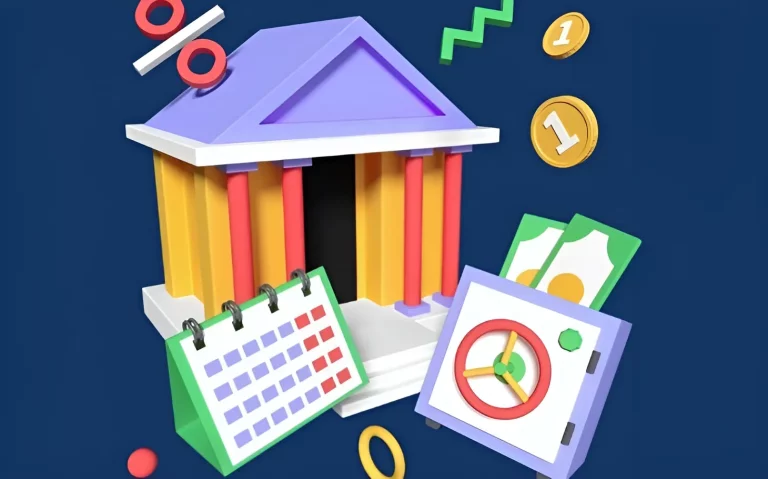Impact of Budget 2021 on Banks & NBFCs



As COVID-19 wreaked havoc across industries in India in 2020, creating a 7.7% hole in the country’s economy, all sectors were waiting with bated breath for Finance Minister Nirmala Sitharaman’s Union Budget 2021. This was the first-ever paperless budget and was received emphatically by the stock markets, but was a mixed bag for the various players in the market like agriculture, textile, insurance, real estate, gold/silver and BFSIs, among others.
Background to Budget 2021
India’s banking industry is experiencing a see-saw Fiscal Year 2020-21, with credit growth keeping a low profile due to the pandemic. Non-Performing Assets (NPAs) and stressed assets have marginally come down, and credit growth, although marginal, is looking good for the 2nd half of the year. The expectation of Banks and Non-Banking Financial Companies (NBFCs) pivoted around the revival of credit in the economy.
The COVID-19 market shock left MSMEs (Micro, Small & Medium Enterprise) wobbling in trouble, as numerous NBFCs, who primarily fund these MSMEs, were facing a liquidity crunch even before the pandemic. The loan origination efforts of NBFCs were cut short, and these companies had to divert their attention to collections. Although in the post-lockdown period the government did launch a stimulus package for MSMEs (funded through banks and NBFCs) under the “Atmanirbhar Bharat” scheme, more liquidity was still required. This is one of the biggest anticipations of NBFCs from this budget.
Highlights and Impact of Budget 2021 on Banks and NBFCs
Below are some key takeaways from the Budget 2021 announcement from a BFSI-perspective. Both the announcements and potential impact on the respective players have been outlined.
| S.No. | Highlight | Announcement/Step Taken | Expected/Potential Impact |
| 1. | Recapitalization of Public Sector Banks (PSBs) | A capital injection scheme of Rs. 20,000 crores into PSBs has been announced. | A sureshot way to perk up the financial health of PSBs and ensure capital adequacy in uncertain and dynamic times. |
| 2. | Asset Reconstruction / Management Company Formation (Bad Bank) | The new budget has suggested the formation of an asset reconstruction and management company or “Bad Bank”, that would act as an aggregator of all these kinds of loans and NPAs and would try to resolve them. Any financial institution that has been burdened with bad loans can sell its holdings at a market price to the Bad Bank, which will help the company clear its balance sheet. | Banks and NBFCs were smacked by the economic slowdown caused by COVID-19, leading to an increase in default payments, bad and stressed loans, and non-performing assets (NPAs). This step will significantly lower NPAs and collection woes of myriad NBFCs. |
| 3. | Reduction of Minimum Loan Size for easier Debt Recovery | For NBFCs with a minimum asset size of Rs. 100 crores, Budget 2021 has, under the Securitization and Reconstruction of Financial Assets and Enforcement of Security Act of 2002 (SARFAESI Act), proposed to lower the minimum loan size to be eligible for debt recovery from Rs. 50 lakh to Rs. 20 lakh. | Loan defaults were galore during the pandemic, so NBFCs wanted the limits to be lowered so as to take quick action against defaulters. Under the SARFAESI Act, lenders can recover their dues faster. Recovery is possible for only secure loans – home loans, loan against property, loan against collateral etc. |
| 4. | Increased focus on Roads and Highways infrastructure spending | Over 13,000 km length of roads, at Rs. 3.3 lakh crores, by March 2022, awarding another 8,500 km and additional 11,000 km of national highway corridors. | Surely an ambitious and achievable plan, this proposal will likely lead to increased demand for commercial vehicles, which would benefit NBFCs like Shriram Transport, Cholamandalam etc. |
| 5. | Adequate Credit Flow to the Agriculture Sector | Union Budget 2021’s agricultural credit target has been bumped up to Rs. 16.5 lakh crores in FY22. | Microfinance Institutions (MFIs) in India are key contributors to credit in rural India, where agriculture is a holy grail for low-income households. The rise in credit expectations into this sector will likely give MFIs a boost. |
| 6. | Setting up of new gold exchanges and designating Securities and Exchange Board of India (SEBI) as the regulator | Soon, SEBI will become the sole regulator of the gold market in India and will be involved with opening new gold exchanges, creating credit lines and forming trade rules. | The downtick in import duties on precious metals and takeover of SEBI as regulator could bolster demand of gold, indirectly leading to more gold loans being offered by banks and NBFCs. |
| 7. | Financial incentives to promote Digital Payment | The Finance Minister has dangled a Rs. 1,500 crore scheme to the digital payments industry and to businesses deploying such solutions. | Digitalization has gathered steam in banking and NBFCs. Fintech companies and lenders will keenly try to maximize on this scheme by accepting digital payments and making loan origination/disbursals digitally. |
Banking Licenses, Financial Access for NBFCs?
There was a lot of chatter prior to Budget 2021 about the concept of issuing banking licenses for non-banking financial companies in 2020. Some big groups in the country even suggested, “Permitting large NBFCs with an asset size of Rs. 50,000 crore plus and having completed 10 years of operations, to convert to banks”. A dramatic effort like this would most definitely lower the cost of capital, encourage competition and stimulate the job market. Yet, Budget 2021 didn’t broach these suggested reforms.
To lighten the blow COVID-19 had on the NBFC sector, the RBI announced several programs like the Partial Credit Guarantee Scheme (PCGS), Special Liquidity Scheme (SLS) and Targeted Long-Term Repo Operations (TLTRO). They provided a decent impetus to numerous NBFCs, and the sector was fervently waiting for more such schemes in Budget 2021, but this wasn’t the case.
As such, NBFCs are still anticipating the below points for them to get back on the business track:
- Setup of a dedicated refinancing body to help with bad loans and NPAs
- Continued liquidity support from banks, the RBI and government
- Extend banks’ co-origination of loans from non-deposit taking to deposit-taking NBFCs
Conclusion
It was clear from Nirmala Sitharaman’s announcements that the BFSI sector remains a strong focus for the government, as it directly and indirectly touches almost all other industries. Non-performing Assets and increased liquidity support for NBFCs are hoped to become key drivers in the recovery of the BFSI sector. Can budget 2021 put India on course to become a $5 trillion economy by 2025?
Related Post

What is Co-Lending and How will NBFCs Benefit From It?
Since the turn of the past decade, smaller lenders have

Gold Loans – the Whats, Hows and Whys
Shiny, pure and incredibly valuable, gold is the metal that’s

5 Use Cases to drive ROI through BNPL as a Lender
The pandemic-induced economy has expanded the credit market in India
- Email: [email protected]
- Sales Enquiries: +91 9344243151
- HR Enquiries: +91 9080996576
Quick Links
Resources
© 2024 LightFi India Private Limited. All rights reserved.
(Formerly known as Habile Technologies)